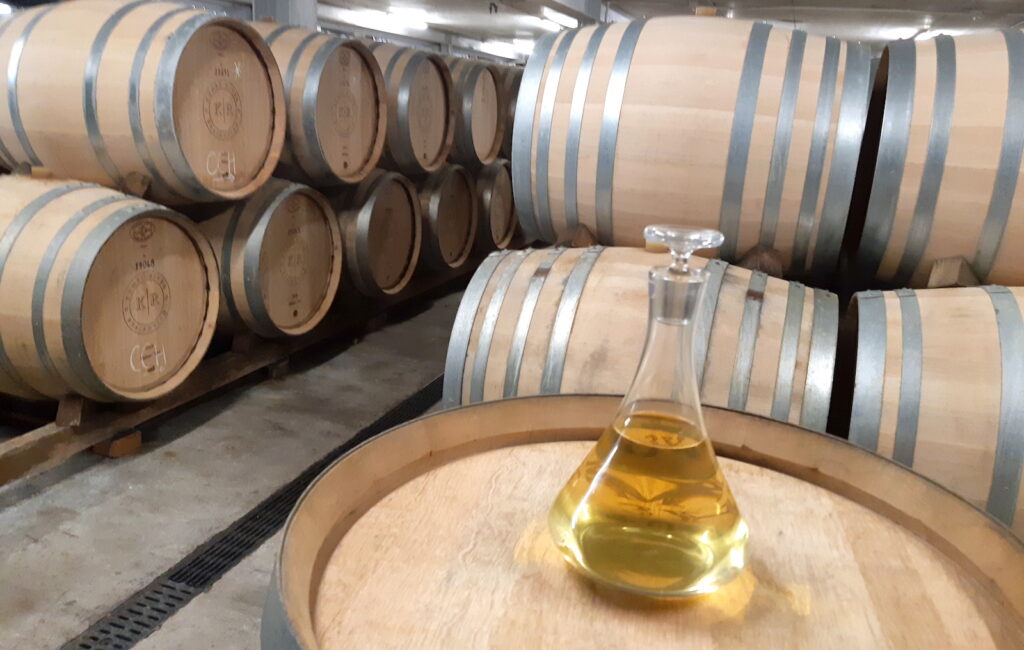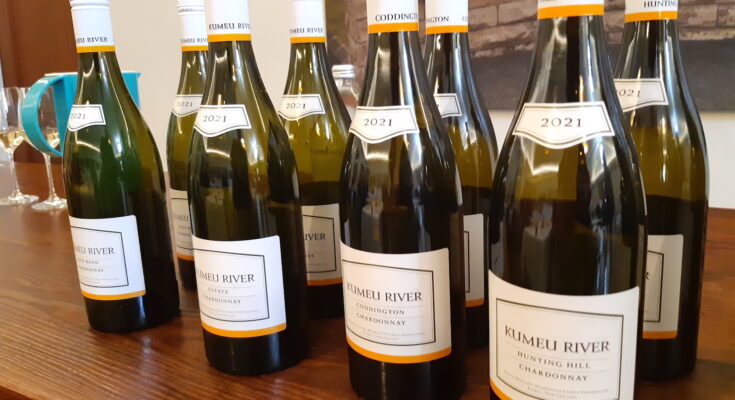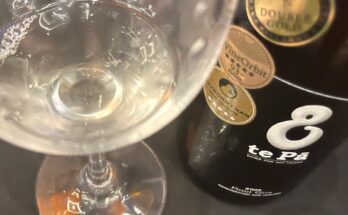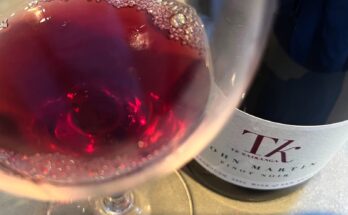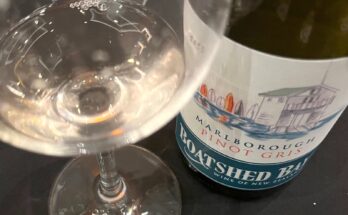Time rolls around to another release day of the latest single vineyard (and Estate) Chardonnays from Kumeu River. After impeccable vintages in first 2019 and then the stellar 2020 – in which Matés Chardonnay was named James Suckling’s ‘White Wine of the Year’ and given a 100/100 score – I’m very keen to see what 2021 has in store. I’ve heard that it’s a very good vintage again, but a little light on quantity – I can’t get any large format versions this year, for example.
As I arrive there’s a glass of Crémant – the fifth incarnation of this rather excellent Kumeu sparkler. Now boasting 10% of reserve wine – they’ve been busy building up stocks of reserve wines for this – and around 5gl of dosage. The dosage is trialled every year until an agreeable level is reached – and this version has a lovely creaminess to the palate that balances well with the tangy acidity. About a 60-40 split of Chardonnay to Pinot Noir, I hear there are plans ahead for a rosé version, and a blanc de blancs.
It’s a delicious drop, and I’m keen to ask why Crémant rather than Méthode Traditionelle? Michael Brajkovich explains that there are a few reasons, each playing a part in their decision – first there are a few rules around calling a wine this name – it must be hand harvested, whole bunch pressed, and it must have an identifying location alongside the wording – so Crémant de Loire, or Kumeu Crémant… which fits the family labelling well, and is frankly less of a mouthful than Méthode Traditionelle.
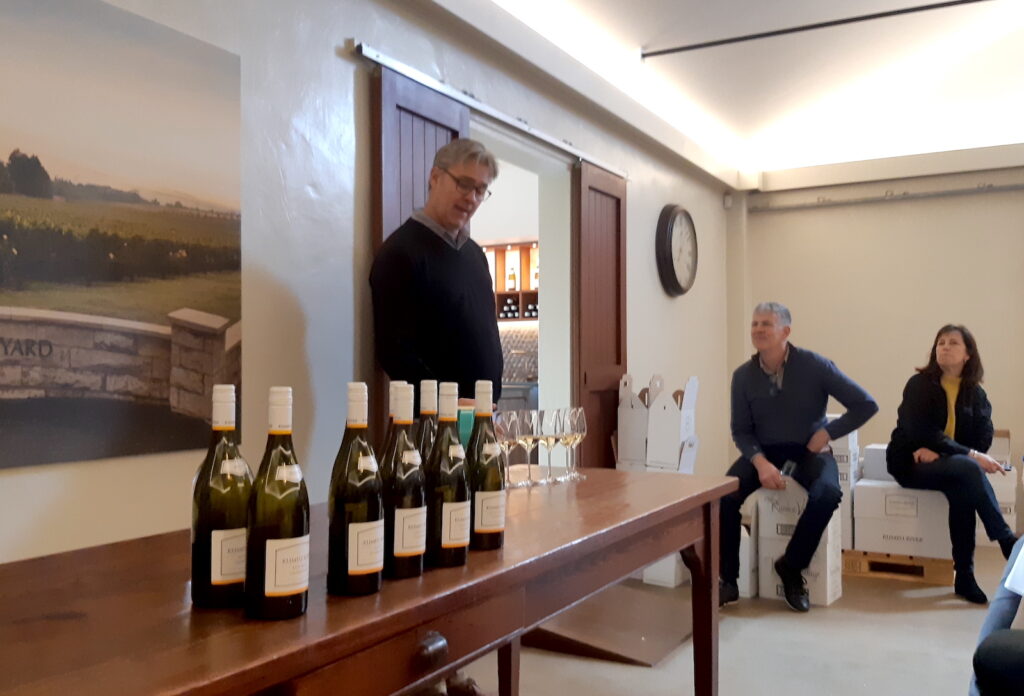
Paul Brajkovich (Marketing, Sales and Exports) introduces the family who are all present – Michael, the winemaker who has just completed his 40th vintage; Marijana who looks after finances and marketing – and organising her three brothers; Milan, who has been the Viticultural Manager since 1986; and of course, Melba, the Matriarch who keeps an eye on it all and has been here since 1958. He then has this to say about the release and the vintage:
“When we had ’19 we though that was the greatest vintage we’d ever seen, and then 2020 came along and superceded it. Then 2021 and of the three, it is arguable whether it is better or less than the others; but what I think you’ll see in these wines is the level of concentration and texture. it’s different but it is very, very smart.”
Michael has this to say about the vintage: “2021 was a bit smaller than usual. It was affected by frost. 2020 was exceptionally dry and that carried on through to the 2021 harvest. Normally here we’d expect 1200-1400 mm of rain, and we only got 800mm in 2020. That dryness did bring on an early Spring and we got frost affected. That’s the first time we had to fly helicopters in five years, and any neighbours who moved in recently got a rude shock. But only for one night.
We did lose between thirty and forty percent of our overall crop. Fortunately the single vineyards seemed to be affected less, so the quantities of those are affected less than the Estate Chardonnay. Normally we would expect one or two days to go over thirty degrees, but in the last four years we haven’t had any thirty degree days. Good, warm ripening conditions. We starting picking sparkling wine grapes on the 5th February, which is unheard of, and everything was finished by the 9th of March, about three weeks earlier than normal. Very compressed, but we’re just delighted with the quality.”
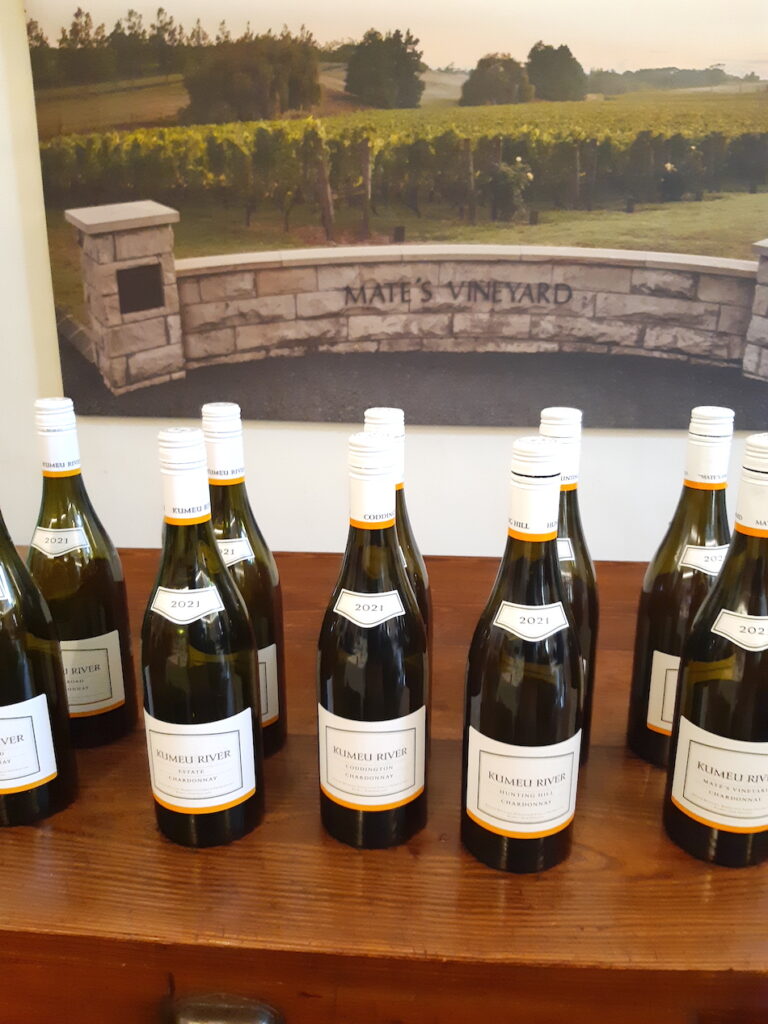
Everything at Kumeu River is made in a similar way – all hand-harvested, processed at the site at Kumeu, fermented using wild yeast, and most of the wines are put in oak barrels, with a varying degree of new oak. All go through 100% malolactic fermentation, and then aged on lees for about 11 months. Of the single vineyard Chardonnays, keen readers will recall that I was not so enamoured of the first vintage of the wine in 2018, from the Rays Road property that the family bought in Ruakaka, inland Hawke’s Bay a few years ago. Now, however, this wine is really hitting its straps – having planted Clone 15 and 548 to go with the 95 that had been planted a dozen years before. It’s very flinty, showing the limestone terroir, but now with an added richness that wasn’t evident in the ‘18s. The underlying minerality is clear, but with the ripe and powerful body and zingy acidity, it’s very balanced and elegant. 93pts
The second wine in the line up is the Kumeu River Estate Chardonnay, which has been made since 1985 using the best selection of what they had available from Kumeu. It’s now made from six vineyard sites and immediately shows the difference between Hawke’s Bay limestone and Kumeu clay. An age-worthy, complex and layered expression – the best I’ve ever tasted, and a step up even from the great 2020 vintage – perhaps a reflection of the 35% lower yields this year? Concentrated and with a delightful fruit tannin note, lending a preserved lemon, grapefruit pith texture and character. Quite bold aromatics of peach, almond, lime curd and greengage, and lovely bright acidity forming a core with that toasty new oak element. Just delicious. 94pts
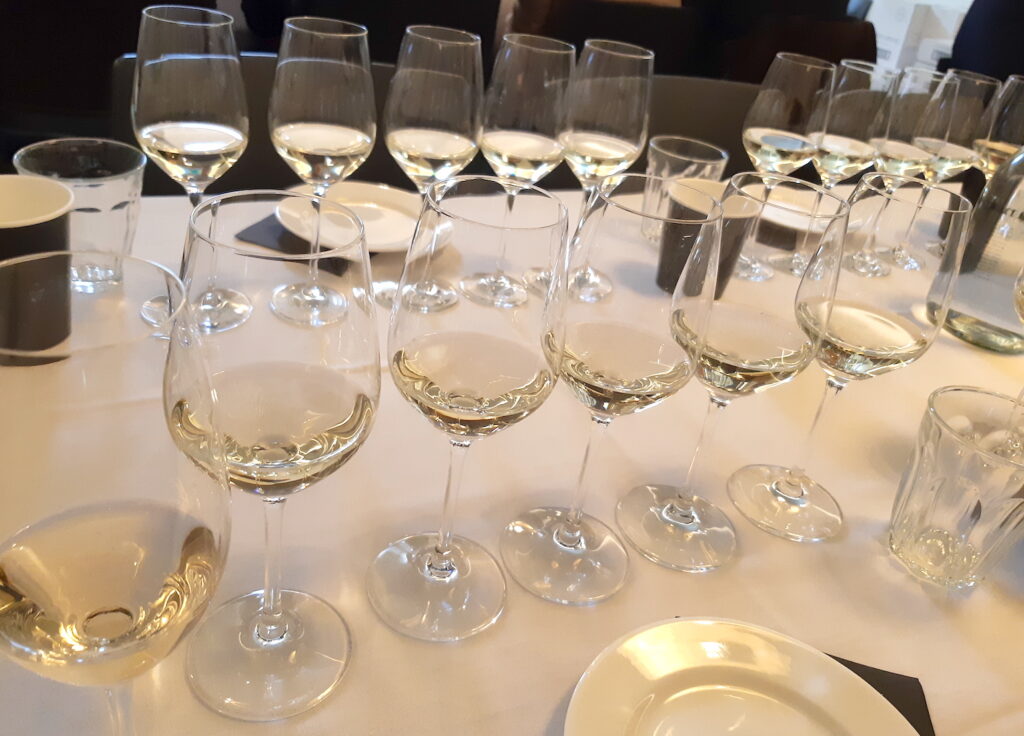
Wine number three is the Coddington Chardonnay, which is comes from a north-facing sun trap of a vineyard about 3kms from the winery. The vineyard is leased, and has three or four years ahead of it before the future becoming uncertain. A lovely peach character is present, as usual, and a plush, textural quality. A toasty oak-char character (from Gilet whose toasting is pretty heavy) compliments the ripeness in the fruit, in a layered, complex core, with a zesty, bright acidity that keeps a lightness through the palate. I find this rich expression a little less focussed and linear than the first two. 94pts
Batonnage is now used much more sparingly in the cellar. Not nearly as much as they used to, but with regular checks, a barrel will get a stir if the team feels it needs it. It not only encourages the fermentation to finish, but also if any wine is looking a little oxidised, then a quick stir will fix that.
Now we move on to Hunting Hill, the vineyard across the road, sitting above Matés Vineyard. The vineyard was replanted with Clone 15 chardonnay in 2001, and it just keeps getting better. The wine is intensely floral, with a lime blossom character, giving a distinctive citrus fragrance on the nose. We’re back to minerality and fine acidic length here after the Coddington. Quite tight and intense, but showing a softer honey, cashew butter note mid-palate. The finish also has a tickle of sappy dryness, which I find quite appealing. 96pts
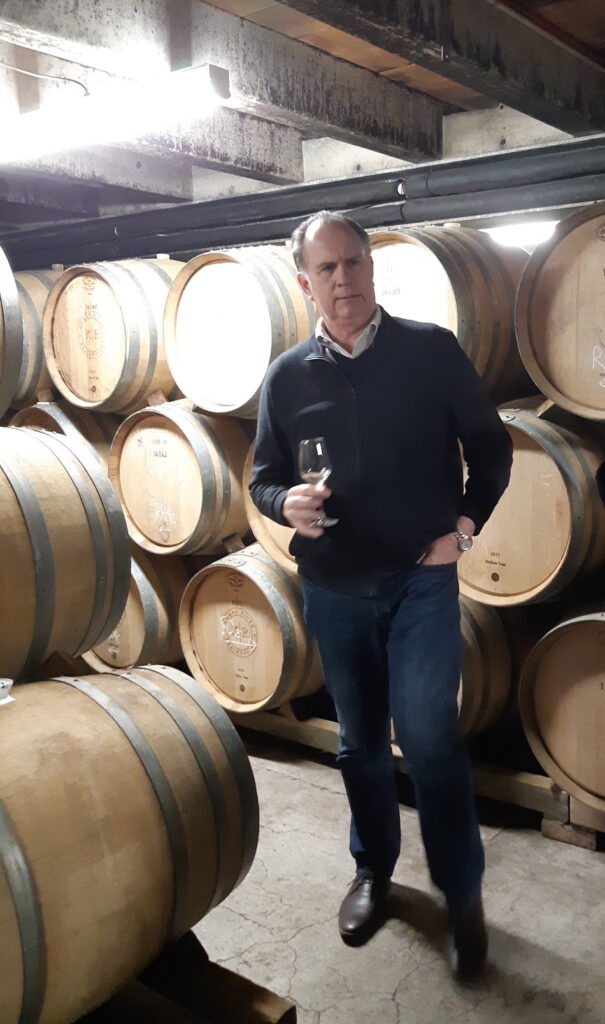
I sometimes describe Matés Vineyard Chardonnay as ‘beautiful chaos’ on release. Today, the 2021 is dense, concentrated and brooding, with weight and a sense of completeness through the palate (despite having the lowest alcohol, at 13%). Using 30% new oak, this is sitting on top a little, but with a ripe power lying underneath. A mineral edge and a pithy, lemon-rind, partially coming from a fruit tannin that also contributes to the texture and personality in this epic wine. Michael describes it as ‘having more stuff in it’. I made the 2020 vintage my top white wine of last year, with a score of 98/100 and I see no reason to lower that score this year. 98pts
